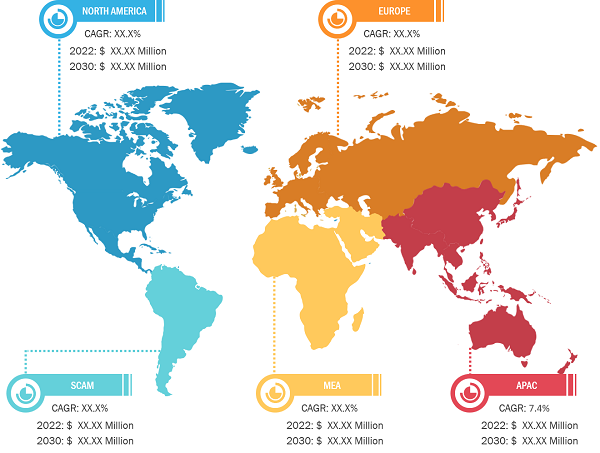Cosmeceutical Segment Based on Treatment Type Fuels Hyperpigmentation Disorder Treatment Market Growth
According to our new research study on “Hyperpigmentation Disorder Treatment Market Forecast to 2031 – Global Analysis – by Treatment Type, Disease Type, and End User,” the hyperpigmentation disorder treatment market size is expected to grow from US$ 7.50 billion in 2024 to US$ 12.89 billion by 2031; the market is expected to register a CAGR of 8.2% during 2025–2031. Major factors driving the hyperpigmentation disorder treatment market growth include the rising prevalence of hyperpigmentation disorder, increasing influence from social media, and rapid advancements in treatment technologies and modalities.
Hyperpigmentation disorder treatment addresses the causes of the condition through medicative, dermatological, and cosmetic means. These treatments aim to reduce or eliminate areas where melanin production has been excessive, characterized by dark spots, patches, or uneven skin tone. The precision medicine and genomic-based therapies for personalized hyperpigmentation treatment are expected to be a major hyperpigmentation disorder treatment market trend in the coming years.
Hyperpigmentation Disorder Treatment Market, by Region, 2024 (%)
Hyperpigmentation Disorder Treatment Market Size and Forecast (2021 - 2031), Global and Regional Share, Trend, and Growth Opportunity Analysis Report Coverage: By Treatment Type (Cosmeceutical, Light or Laser Therapy, Microdemabrasion, Chemical Peels, Microbrasion, Others), Disease Type (Melasma, Solar Lentigines, Post-inflammatory Hyperpigmentation, and Others), End User (Hospitals, Dermatology Centers, and Others), and Geography (North America, Europe, Asia Pacific, South and Central America, and Middle East and Africa)
Hyperpigmentation Disorder Treatment Market Size by 2031
Download Free Sample
Source: The Insight Partners Analysis
Hyperpigmentation Disorder Treatment Market Analysis Based on Segmental Evaluation:
Based on treatment type, the hyperpigmentation disorder treatment market is segmented into cosmeceutical, light or laser therapy, microdemabrasion, chemical peels, microbrasion, and others. In 2024, the cosmeceutical segment held a significant hyperpigmentation disorder treatment market share. While cosmeceuticals play a crucial role in hyperpigmentation treatment, they are attractive to patients who are unwilling to undergo invasive procedures. Besides, they bring together the best of both worlds, cosmetics and pharmacy, and thus are effective in targeting the melanin production in the skin. Studies conducted on animals have shown that a 75% mulberry extract and 20% liquiritin cream can lower MASI scores. They boast better characteristics than hydroquinone in terms of tolerability and efficacy. Kojic acid blends have depigmentation of nearly 40%, which is similar to that of hydroquinone. Niacinamide, combined with tranexamic acid, is capable of lightening axillary hyperpigmentation, with a percentage reduction ranging from 30 to 50%. Being a natural product, ellagic acid (0.5%) has been reported to fade dark spots in 70% of users. The use of cosmeceuticals helps achieve improvements of 50 to 80% in various skin types. The main emphasis is on maintenance with sun protection, as without it, a recurrence rate of 60-70% may occur; thus, the guarantee of safe and effective results is provided.
The scope of the hyperpigmentation disorder treatment market report includes an assessment of the market performance in North America, Europe, Asia Pacific, South and Central America, and the Middle East and Africa. In terms of revenue, North America dominated the hyperpigmentation disorder treatment market share in 2024.
The US leads the North America hyperpigmentation disorder treatment market. The rising prevalence of hyperpigmentation diseases such as post-inflammatory hyperpigmentation (PIH) and melasma is driving the need for appropriate treatments that can address this issue. PIH is among the top issues faced by Black and Hispanic individuals and is caused by such factors as acne, trauma, and UV exposure. Topical agents, glycolic and salicylic peels, and low-fluence Q-switched Nd: YAG lasers are used to clear the skin in up to 70% of cases. Sunscreen with SPF 50+ and oral tranexamic acid, which continue to reduce the intensity of the condition, are indicative of a market shifting toward more inclusive and evidence-based therapies for various skin types.
AbbVie Inc, EpiPharm AG, Galderma SA, Obagi Cosmeceuticals LLC, Bayer AG, Lutronic Co Ltd, La Pristine, L’OREAL S.A, Pierre Fabre SA, and Vivier Pharma Inc are among the leading companies profiled in the hyperpigmentation disorder treatment market report.
Based on treatment type, the hyperpigmentation disorder treatment market is segmented into cosmeceutical, light or laser therapy, microdemabrasion, chemical peels, microbrasion, and others. By disease type, the market is classified into melasma, solar lentigines, post-inflammatory hyperpigmentation, and others. By end user, the market is divided into hospitals, dermatology centers, and others. In terms of geography, the market is categorized into North America (US, Canada, and Mexico), Europe (France, Germany, UK, Spain, Italy, and the Rest of Europe), Asia Pacific (China, Japan, India, Australia, South Korea, and the Rest of APAC), South and Central America (Brazil, Argentina, and the Rest of South and Central America), and the Middle East and Africa (Saudi Arabia, UAE, South Africa and the Rest of Middle East and Africa).
Contact Us
Phone: +1-646-491-9876
Email Id: sales@theinsightpartners.com